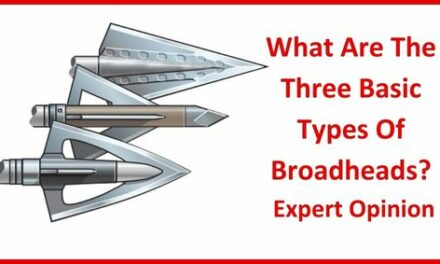Blunt points are designed for hunting small game animals and birds, such as rabbits, squirrels, ptarmigan, and grouse. They are flat instead of pointed and made from rubber, plastic, or steel, and kill by shock.
Some small game animals that can be hunted with a blunt include:
- Rabbits
- Squirrels
- Ptarmigan
- Grouse
- Groundhogs
- Racoons
- Armadillos
- Possums
- Pigeons
- Doves

However, it is essential to note that blunt points may not be suitable for all small game animals.
For example, a body shot on a small game animal may not kill the animal immediately, as most small game animals live in holes. In such cases, a headshot is recommended to ensure the animal’s recovery.
Additionally, some small game animals, like gophers, may be more challenging to hunt with blunts, as they can run and escape into their holes if hit in the body. In such situations, broadheads might be a better choice.
Blunt Hunting
Blunt hunting, the practice of using arrows with blunt tips to harvest small game, offers a unique and challenging experience for bowhunters.
This guide will provide a comprehensive overview of blunt hunting, including its definition, purpose, suitability for different animals, recommended equipment, ethical considerations, and alternatives to blunt arrowheads.
Blunt Arrowheads
Blunt arrowheads are designed to deliver a forceful impact rather than pierce through the animal.
They are typically made from materials like wood, bone, or rubber and have a rounded or flattened tip.
Their primary purpose is to kill small game animals quickly and humanely while minimizing damage to the meat and hide.
What Game Do You Hunt With A Blunt
Blunt hunting is often used for small game such as:
- Rabbits
- Squirrels
- Groundhogs
- Raccoons
- Pigeons
- Doves
These animals are relatively small and have fragile bones, making them susceptible to blunt force trauma.

For blunt hunting, it’s best to choose animals with fragile bones and thin skin.
This allows the blunt arrowhead to deliver a strong impact, causing a quick and humane kill.
Good choices for blunt hunting include small mammals like rabbits, squirrels, groundhogs, and raccoons. Birds with thin skin and delicate bone structure, like pigeons and doves, are also suitable for blunt hunting.
When hunting with blunt arrows, it’s crucial to choose animals that are susceptible to their impact.
Larger mammals like deer, elk, and boars have thick fur and strong bones that can easily deflect blunt arrowheads, potentially leading to injury and prolonged suffering.
Similarly, birds with dense feathers and heavy bodies, like ducks, geese, and turkeys, require more force to subdue and can be difficult to ensure a clean kill with a blunt arrow.
Ultimately, the goal of hunting is to be as humane as possible. If there’s any doubt about achieving a clean and efficient kill with a blunt arrow, it’s best to choose another hunting method to avoid potential animal suffering.
Recommended Animals for Blunt Use:
- Small mammals with fragile bones: Rabbits, squirrels, groundhogs, raccoons
- Birds with thin skin and delicate bone structure: Pigeons, doves
Animals to Avoid Hunting with Blunts:
- Large mammals with thick fur and strong bones: Deer, elk, boar
- Birds with dense feathers and heavy bodies: Ducks, geese, turkeys
- Any animal where a clean kill is not guaranteed, causing unnecessary suffering
Blunt Arrowhead Design
Blunt arrowheads come in many shapes and sizes, but they all have some key features in common.
First, they have a rounded or flattened tip instead of a sharp point. This distributes the force of impact over a wider area when it hits an animal, increasing the chances of a quick and humane kill.
Second, blunt arrowheads are heavier than broadheads used for larger game. This extra weight helps them maintain momentum and deliver a more powerful blow.
Finally, they are made from durable materials like wood, bone, rubber, or plastic to withstand the impact of hitting an animal without breaking or shattering. These features make blunt arrowheads ideal for hunting small game while minimizing damage to the animal’s body.
Blunt arrowheads come in various shapes and sizes, but they generally share the following characteristics:
- Rounded or flattened tip: This distributes the force of impact over a wider area, increasing the likelihood of a quick kill.
- Heavy weight: Blunt arrowheads are heavier than broadheads, which helps them retain momentum and deliver more force.
- Durable material: They are made from materials that can withstand the impact of hitting an animal without breaking or shattering.
Materials Used
Blunt arrowheads are crafted from a variety of materials, each offering unique benefits for hunters.
Wood, a traditional choice, provides good weight and impact, making it a reliable option for hunting small game.
Bone, another classic material, boasts impressive durability and even offers natural shock absorption, further reducing the risk of animal suffering.
Rubber, a modern choice, is lightweight and durable, while also being readily available in various shapes and sizes to suit different hunting needs.
Lastly, plastic serves as an economical alternative, offering decent weight at a lower cost, though it may not be as durable as other materials.
Ultimately, the best material for blunt arrowheads depends on individual preferences and hunting goals.
- Wood: Traditional material for blunt arrowheads, offering good weight and impact.
- Bone: Another classic material, known for its durability and natural shock absorption.
- Rubber: Modern option, lightweight, durable, and readily available in various shapes.
- Plastic: Economical alternative, lightweight but may not be as durable as other materials.
How Blunt Arrowheads Work
Blunt arrowheads work through a simple but powerful principle: transferring kinetic energy.
When the arrow hits its target, the blunt tip delivers a forceful impact, transferring all the energy from the arrow’s flight into the animal’s body.
This intense force acts like a shockwave, disrupting vital organs and causing immediate unconsciousness, leading to a quick and humane death.
This method differs significantly from sharp arrowheads, which rely on piercing and cutting to kill prey. Instead, blunt arrowheads utilize blunt force trauma to achieve a similar result, making them ideal for hunting small game animals with fragile bone structures.
- Blunt arrowheads work by transferring their kinetic energy into the animal upon impact.
- The force of the impact stuns the animal and disrupts vital organs, leading to a quick and humane death.

Kinetic Energy Considerations
Blunt arrowheads rely on kinetic energy to be effective. This means your bow needs enough power to propel the arrow with sufficient force for a clean kill.
Simply put, if your bow isn’t strong enough, the arrow won’t deliver the necessary impact.
To achieve this balance, three factors come into play: bow strength, arrow weight, and blunt head weight.
Choosing a powerful bow is crucial, but it’s only half the equation.
You also need arrows that are heavy enough to retain momentum and carry the blunt head’s weight efficiently.
Finally, the weight of the blunt head itself plays a key role. Picking a blunt head that’s too light will reduce the impact, while one that’s too heavy can slow down the arrow.
Finding the right combination of these three factors is crucial for ensuring a successful and ethical hunt with blunt arrowheads.
Remember, a powerful bow paired with the right arrows and blunt head weight will deliver the necessary kinetic energy for a quick and humane kill.
- Using blunt arrowheads requires sufficient kinetic energy to deliver a lethal blow.
- Ensure your bow is powerful enough and you use the correct arrow weight and blunt head combination to achieve the necessary impact.
Hunting Birds with Blunts
Hunting birds with blunt arrows demands both skill and ethical awareness. While some birds are suitable for this type of hunting, others should be avoided entirely.
Choosing the right bird is crucial for ensuring a quick and humane kill.
Pigeons and doves are excellent choices for blunt arrow hunting. These birds have relatively small bodies and delicate bone structures, making them susceptible to the impact of a blunt arrowhead.
A well-placed shot to the head will ensure a swift and humane kill.
However, larger birds like ducks, geese, and turkeys are not suitable for hunting with blunt arrows. Their heavier bodies and dense feathers require more force than a blunt arrowhead can deliver.
Attempting to use blunt arrows on these birds could lead to injury and prolonged suffering, violating ethical hunting practices.
For a successful and ethical bird hunt with blunt arrows, always aim for a clean headshot. This ensures the bird is rendered unconscious immediately, causing minimal suffering.
Remember, ethical hunting involves respecting the animal and ensuring its quick and humane demise.
Hunting birds with blunt arrows requires precision and ethical considerations.
Suitable Birds for Bowhunting with Blunts:
- Pigeons
- Doves
Birds to Avoid Hunting with Blunts:
- Ducks
- Geese
- Turkeys
Always ensure a clean headshot for a quick and humane kill when hunting birds with blunt arrows.
Proper Use of Blunts
Using blunt arrows responsibly requires proper practice and ethical considerations.
Before heading out on a hunt, dedicate time to honing your skills and shot placement through target practice. This ensures you have the accuracy and confidence needed for a clean kill.
Keep in mind that blunt arrows are primarily intended for small game. For larger animals, you should switch to arrows equipped with sharp broadheads designed for this purpose.
When hunting with blunt arrows, always aim for vital areas like the head and neck. This ensures a swift and humane kill with minimal suffering for the animal.
Prioritizing animal welfare is paramount. Remember to follow all local hunting regulations and ensure your actions are ethical and responsible.
By adhering to these guidelines, you can enjoy the unique challenge of blunt hunting while respecting the animals you encounter.
- Target practice: Hone your skills and ensure shot placement before hunting.
- Sharp broadheads for larger animals: Use different arrows with broadheads for larger game.
- Clean kills: Aim for vital areas like the head and neck for a quick and humane kill.
- Ethical considerations: Follow all local hunting regulations and prioritize animal welfare.
Tips To Hunt With A Blunt
When hunting small game with blunt arrows, precise shot placement is crucial for a quick and humane kill.
Here’s a breakdown of the most effective targeting techniques:
Headshots:
For small mammals like rabbits, squirrels, and groundhogs, headshots are the ideal option. This ensures immediate impact on vital organs, leading to a swift and painless death.
Aim for the center of the head between the eyes for the best results. Similarly, headshots are highly effective for birds like pigeons and doves.
Neck shots:
While headshots are ideal, they might not always be possible, especially in dense cover or for larger small game like raccoons. In these situations, aiming for the neck offers a good alternative.
A well-placed neck shot can still deliver a lethal blow by severing the spinal cord or major blood vessels.
Body shots:
Body shots should only be used as a last resort if head or neck shots are not possible. While it’s still possible to achieve a clean kill with a well-placed body shot, the risk of causing unnecessary suffering is higher.
Aim for the vital organs located in the chest cavity for the best chance of a quick and humane kill.
Remember, ethical hunting prioritizes animal welfare. Always aim for the most effective and humane shot placement to minimize suffering and ensure a quick and clean kill.
- Headshots: Ideal for small mammals and birds.
- Neck shots: Effective alternative for larger small game.
- Body shots: Use as a last resort, ensuring a clean kill.
Importance of Headshots
Headshots are crucial for ensuring a clean and humane kill with blunt arrowheads. Precise aim and proper shot placement are essential for success.
Ethical Considerations in Blunt Hunting
When engaging in blunt hunting, ethical considerations are paramount. It’s crucial to only target species that are suitable for this method, ensuring a quick and humane kill.
This means ensuring the chosen animal has a fragile bone structure and is susceptible to the impact of a blunt arrowhead.
Targeting larger animals or those with thick fur and strong bones is not ethical, as it can lead to prolonged suffering and pain.
Furthermore, a successful blunt hunting experience hinges on precise shot placement. Aiming for vital areas like the head and neck significantly reduces the animal’s suffering and ensures a swift demise.
Body shots should only be used as a last resort, and only when the possibility of a clean kill remains high.
Minimizing animal suffering is an absolute priority in ethical blunt hunting. This includes avoiding unnecessary shots and prioritizing quick kills.
Responsible hunters practice proper shot placement and ensure their equipment is powerful enough for a clean kill. Additionally, following all local hunting regulations and laws is crucial for ethical hunting and ensures the responsible management of wildlife populations.
By adhering to these ethical guidelines, blunt hunting can be a rewarding and challenging experience while respecting the animals pursued.
Remember, ethical hunting involves prioritizing animal welfare and ensuring a quick and humane kill.
- Only hunt species appropriate for blunt hunting.
- Ensure a clean kill with a precise shot.
- Minimize suffering and avoid unnecessary pain.
- Follow all local hunting regulations and laws.
Benefits and Drawbacks
Advantages of Using Blunts:
Blunt arrows offer several advantages that make them a popular choice for hunting small game.
Minimal damage to the meat and hide: Unlike sharp broadheads, blunt arrowheads deliver blunt force trauma, causing internal damage without tearing or puncturing the animal’s skin and flesh. This results in minimal damage to the meat and hide, preserving their quality and value.
Safer for practice and target shooting:
Blunt arrowheads are much safer than sharp broadheads when practicing or target shooting. This is because they are less likely to ricochet or cause injuries if they miss the target.
Additionally, blunt arrowheads are less likely to damage targets, making them a more economical choice for practice sessions.
Reusable and cost-effective:
Unlike broadheads, which can become damaged and need to be replaced after hitting a target, blunt arrowheads are often reusable.
This makes them a more cost-effective option for hunters, especially those who practice regularly.
Unique and challenging hunting experience:
Blunt hunting requires a different skillset and approach compared to using sharp broadheads.
Due to their lower stopping power, successful blunt hunting demands precise shot placement and a well-tuned bow. This makes it a unique and challenging experience that can test the skills of even the most experienced hunters.
- Minimal damage to meat and hide.
- Safer for practice and target shooting.
- Reusable and cost-effective.
- Unique and challenging hunting experience.
Limitations and Drawbacks of Blunt Arrowheads:
While blunt arrowheads offer several advantages, they also have some limitations to consider:
Requires sufficient bow power and heavy arrows:
To deliver the necessary impact for a clean kill, blunt arrows require a more powerful bow than those used with broadheads.
Additionally, heavier arrows are needed to retain momentum and carry the weight of the blunt head effectively. This can limit the appeal of blunt hunting for some individuals who may not have access to suitable equipment.
Only effective for small game:
Blunt arrowheads are not powerful enough to penetrate the thick hide and strong bones of larger animals. Their effectiveness is limited to small game species with fragile bone structures, such as rabbits, squirrels, and birds.
For larger game, sharp broadheads are the only ethical and effective option.
Ethical concerns if shot placement is inaccurate:
Poor shot placement with a blunt arrowhead can lead to unnecessary suffering for the animal. This is because blunt force trauma, while effective when delivered to vital organs, can cause significant pain if it hits non-lethal areas.
Ethical hunters prioritize precise shot placement to ensure a quick and humane kill.
Not suitable for all types of hunting:
Blunt arrows are not suitable for all types of hunting. They can be dangerous in situations where ricochets are a possibility, such as hunting in dense forests with hard-packed ground.
Additionally, hunting large or dangerous animals with blunt arrows is unethical and potentially dangerous.
- Requires sufficient bow power and heavy arrows.
- Only effective for small game.
- Ethical concerns if shot placement is inaccurate.
- Not suitable for all types of hunting.





![Ravin R10 Cocking and Decocking [2023 Guide]](https://bowsector.com/wp-content/uploads/2023/08/ravin-r10-cocking-and-decocking-440x264.jpg)





